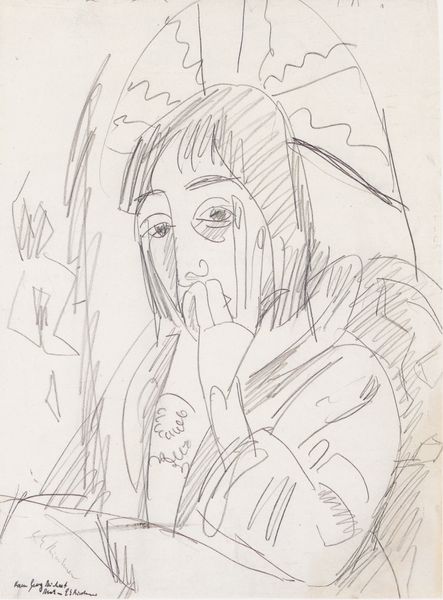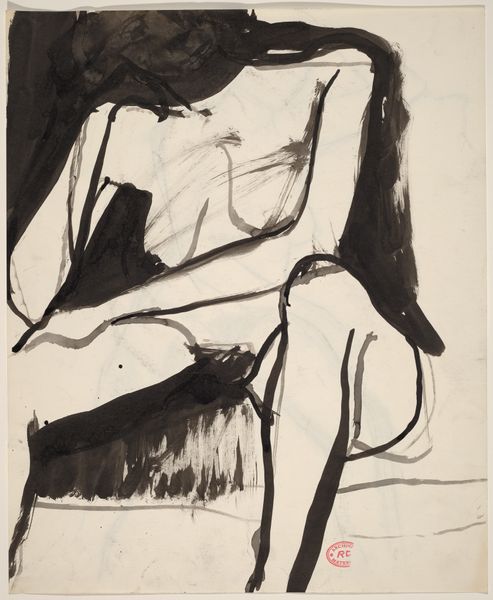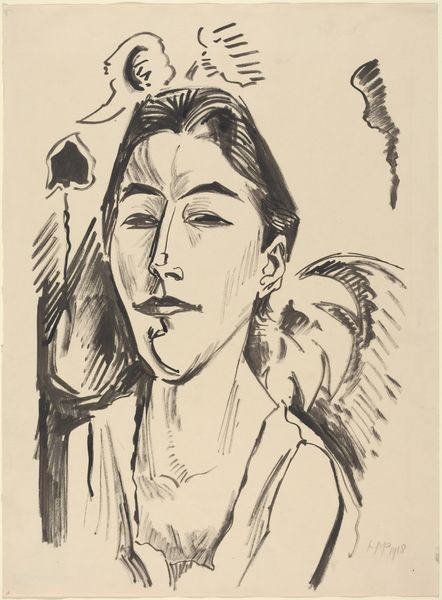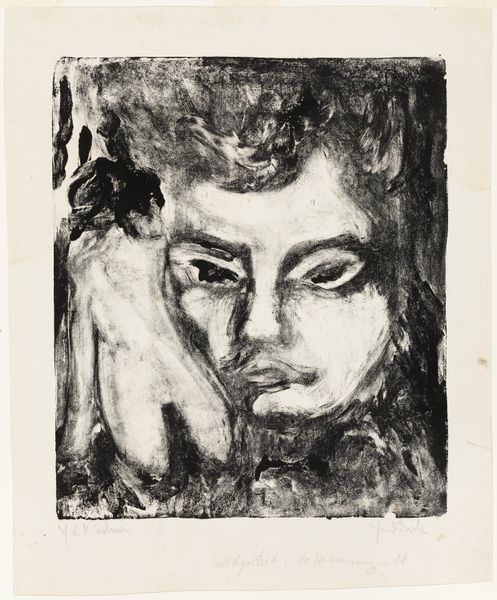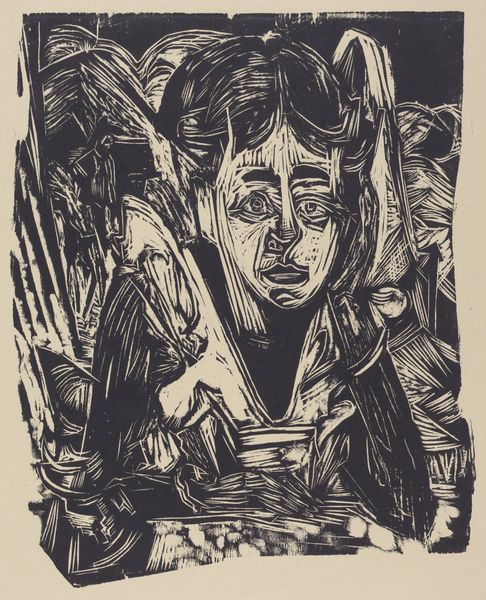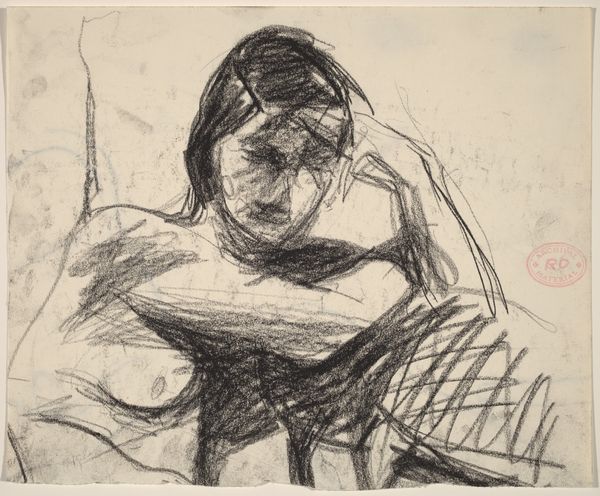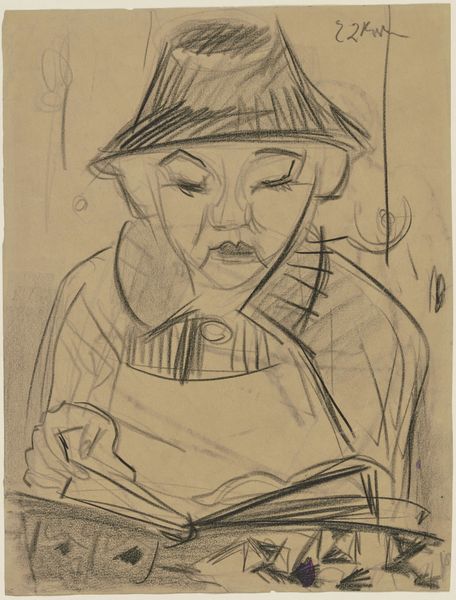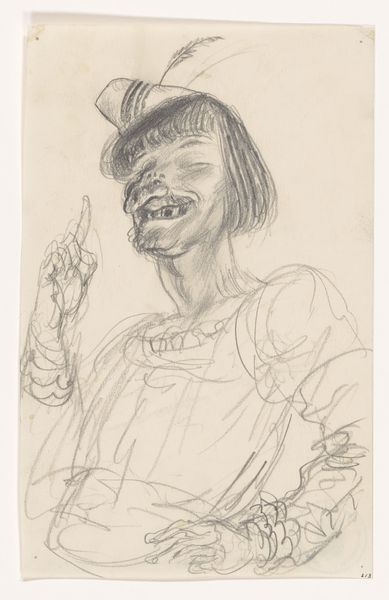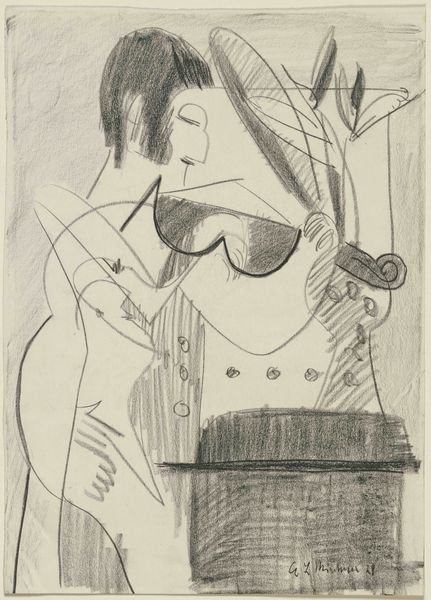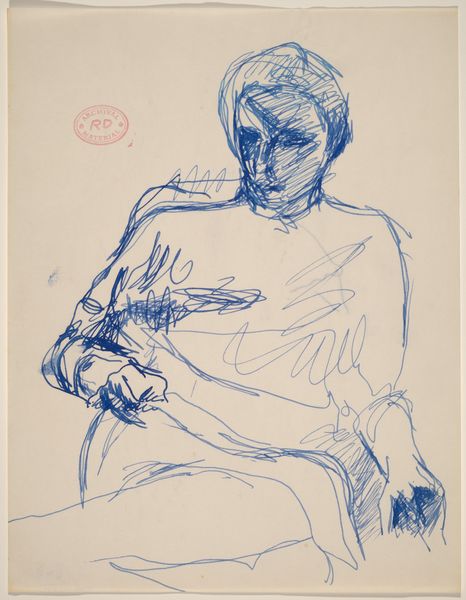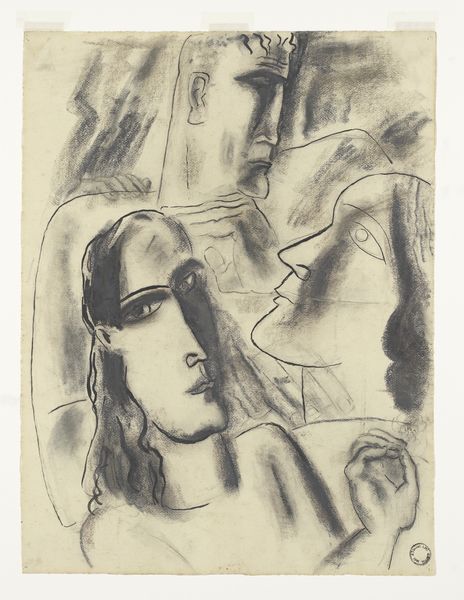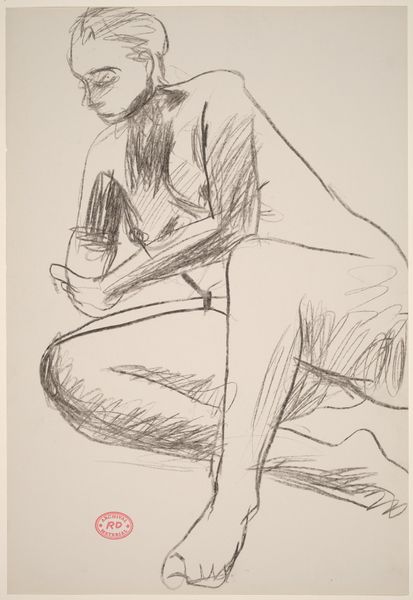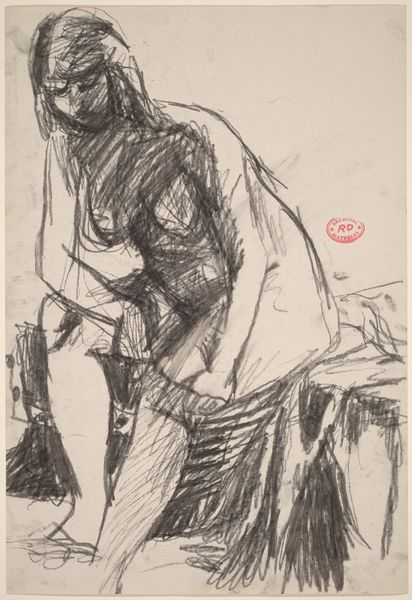
drawing, print, paper, ink
#
drawing
# print
#
pencil sketch
#
caricature
#
german-expressionism
#
paper
#
ink
#
pencil drawing
#
expressionism
#
portrait drawing
Dimensions: plate: 39.9 x 31.7 cm (15 11/16 x 12 1/2 in.) sheet: 51.2 x 37.8 cm (20 3/16 x 14 7/8 in.)
Copyright: National Gallery of Art: CC0 1.0
Editor: Here we have Max Pechstein's 1917 work, "The Fur Neck Piece", made with ink and pencil on paper. The sharp lines create a certain nervous energy. It almost feels like the woman in the portrait is trapped or confined. How do you interpret this work? Curator: That feeling of entrapment is interesting. Expressionism, as a movement, was deeply concerned with raw emotional expression, often channeled through distortion. But it’s worth asking, what does the fur piece *mean* here? Beyond just warmth or status. Think of fur’s symbolic associations: luxury, certainly, but also perhaps a kind of primal nature. Do you think that contrasts with the somewhat constricted pose? Editor: Definitely. The way she’s almost hiding behind the fur, or maybe clutching it? The feathers also feel a bit cage-like around her face. Curator: Exactly. Pechstein made this during World War I. Consider the broader context of the time. Expressionism served as a release for anxieties and social commentary about alienation and what some would describe as the growing dehumanization happening because of the mechanization and urban realities of that time, which led to many artists examining or rejecting old traditions. Editor: So, the fur, the feathers, they could all be symbols of a kind of forced return to nature, even while she's trapped in the societal expectations of the time? Curator: Precisely. And Pechstein is hinting at that tension, using the woman’s image as a vessel to speak to the deeper, perhaps subconscious, fears of his era. A visible display of psychological experience. Do you find that reading adds something for you? Editor: Absolutely. Seeing it that way makes the piece so much richer and even a bit disturbing. It shows how loaded something seemingly simple like a portrait can be. Curator: Indeed. Everyday symbols become portals to understanding a shared cultural psyche. A powerful reminder that art often reveals more than it depicts.
Comments
No comments
Be the first to comment and join the conversation on the ultimate creative platform.
